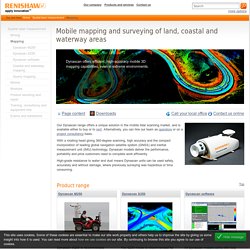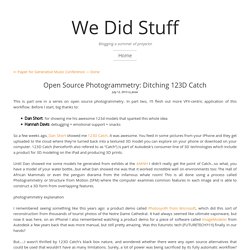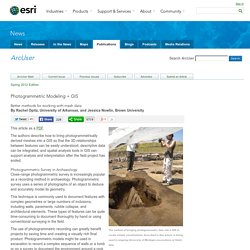

İnteraktif Topoğrafya Haritası - Haritalarla Öğreniyorum. Chicane. Handheld 3D scanners. Mobile mapping and surveying of land, coastal and waterway areas. Working with Dynascan has helped surveyors in a range of industries survey large and difficult-to-access areas, while working cost effectively.

Our systems are lower in price than those offered by other companies, yet backed by remote diagnostic support and functionality-rich software. The small size and weight of Dynascan models make them versatile enough to deploy on a range of vehicles or vessels. You can now dynamically survey areas of limited or difficult access, including steep narrow tracks, parks, small river tributaries, and narrow waterways.
Dynascan contains no delicate scanning mechanisms or rotating mirrors, and is designed to operate in the world's most extreme environments. Dynascan is built to industrial specifications and with an all-weather design that ensures the system will operate after long trans-shipment journeys, minimising downtime on the job and time spent in the repair shop. Información general - FARO Focus3D - Escáner 3D. Body Scanning. We scan a full body in ultra high resolution 15k colour using our 80 X DSLR photogrammetry system.

If you are looking for a portable fast body scanning solution we can use our ultra compact Artec M scanning system. Using the Artec we can scan a full body in about 2 minutes and provide you with a model within the hour. Open Source Photogrammetry: Ditching 123D Catch – We Did Stuff. This is part one in a series on open source photogrammetry.

In part two, I’ll flesh out more VFX-centric application of this workflow. Before I start, big thanks to: Dan Short: for showing me his awesome 123d models that sparked this whole ideaHannah Davis: debugging + emotional support + snacks So a few weeks ago, Dan Short showed me 123D Catch. It was awesome. Until Dan showed me some models he generated from exhibts at the AMNH I didn’t really get the point of Catch…so what, you have a model of your water bottle…but what Dan showed me was that it worked incredible well on environments too: The Hall of African Mammals or even the penguin diarama from the infamous whale room! I remembered seeing something like this years ago: a product demo called Photosynth from Microsoft, which did this sort of reconstruction from thousands of tourist photos of the Notre Dame Cathedral.
Photo limits: the iphone app seems to allow a maximum of 40 images. Here are the steps: Part 1: VisualSFM Caveats. Photogrammetric Modeling + GIS. Spring 2012 Edition Better methods for working with mesh data By Rachel Opitz, University of Arkansas, and Jessica Nowlin, Brown University The method of bringing photogrammetric data into a GIS to create simple visualizations described in this article is being used in ongoing University of Michigan excavations at Gabii, Italy.

This article as a PDF. The authors describe how to bring photogrammetrically derived meshes into a GIS so that the 3D relationships between features can be easily understood, descriptive data can be integrated, and spatial analysis tools in GIS can support analysis and interpretation after the field project has ended. Photogrammetric Survey in Archaeology Close-range photogrammetric survey is increasingly popular as a recording method in archaeology.
This technique is commonly used to document features with complex geometries or large numbers of inclusions, including walls, pavements, rubble collapse, and architectural elements. The Basic Process The Initial Mesh.